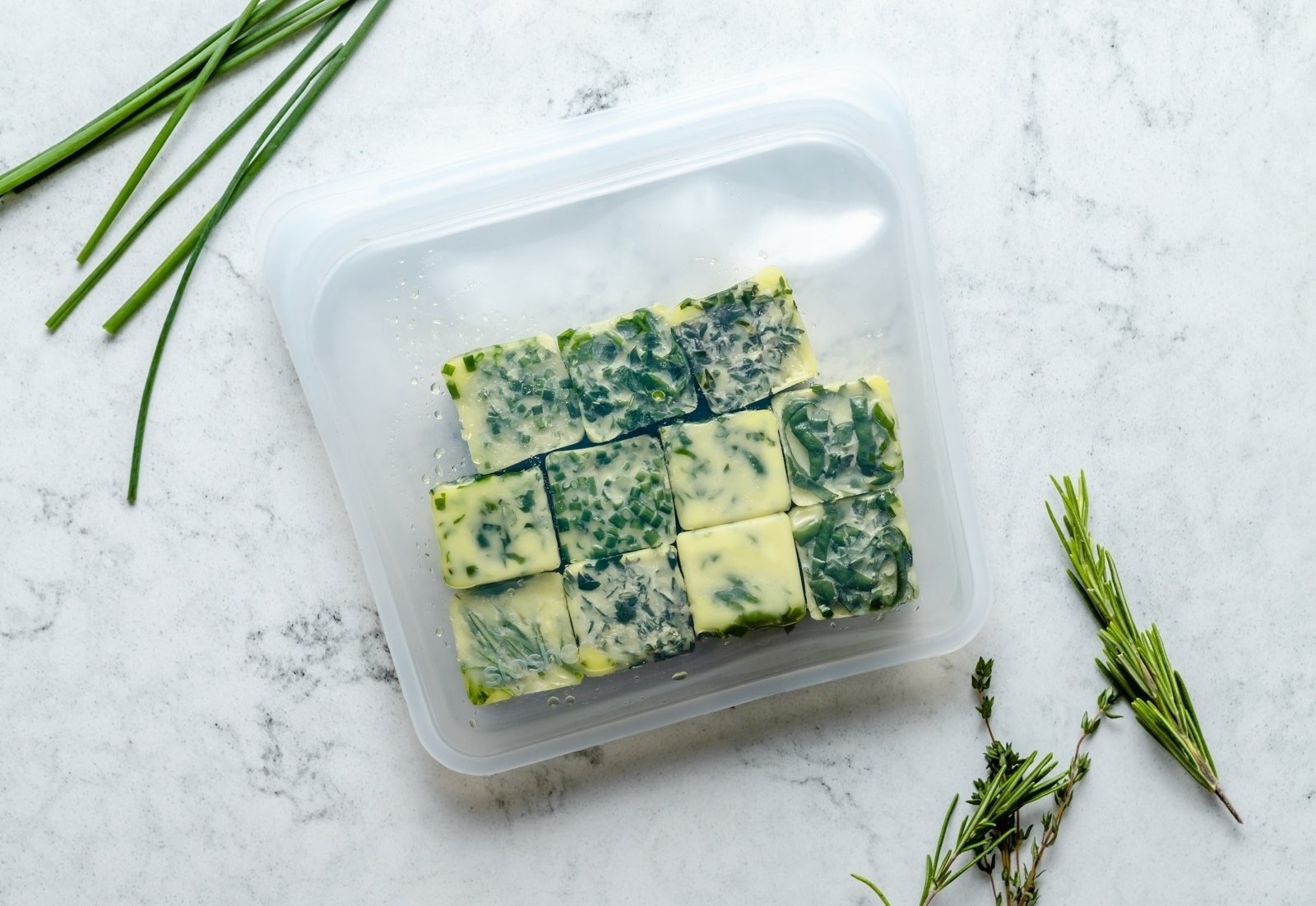

Articles
How To Store Fresh Herbs In Freezer
Modified: January 6, 2024
Learn how to store fresh herbs in the freezer with our informative articles. Keep your herbs fresh for longer and easily access them whenever needed.
(Many of the links in this article redirect to a specific reviewed product. Your purchase of these products through affiliate links helps to generate commission for Storables.com, at no extra cost. Learn more)
Introduction
Welcome to our comprehensive guide on how to store fresh herbs in the freezer. If you’ve ever found yourself with an abundance of fresh herbs that you can’t possibly use before they go bad, freezing them is a fantastic way to preserve their flavor and extend their shelf life. Whether you’ve grown herbs in your garden or bought them from a local market, learning how to properly freeze them ensures that you always have flavorful herbs on hand, even during the off-season.
Freezing herbs is a simple process that allows you to maintain their vibrant flavors, aromas, and nutritional properties. When done correctly, frozen herbs can retain their taste and aroma for several months, making them a convenient option for adding a burst of freshness to your favorite recipes.
In this guide, we’ll discuss the benefits of freezing fresh herbs, the best methods for freezing them, and tips for properly storing them. We’ll also provide step-by-step instructions for each freezing method, so you can choose the option that suits your needs and preferences.
So, whether you have an overabundance of fresh basil, cilantro, rosemary, or any other herb, read on to discover how to store them effectively in your freezer. By utilizing these techniques, you’ll be able to enjoy the flavors and aromas of your favorite herbs all year round.
Key Takeaways:
- Preserve the vibrant flavors and aromas of fresh herbs by freezing them in ice cubes, oil, or Ziploc bags. Enjoy the convenience of having herbs on hand year-round to elevate your culinary creations.
- Properly store and label frozen herbs to maintain their quality and maximize shelf life. Experiment with different freezing methods to find the perfect way to preserve the flavors of your favorite herbs.
Read more: How To Store Herbs In Freezer
Why Freeze Fresh Herbs?
Freezing fresh herbs is an excellent way to preserve their flavor, aroma, and nutritional value. Here are some compelling reasons why you should consider freezing your fresh herbs:
- Prolong Shelf Life: Fresh herbs have a relatively short shelf life, and they can wilt or spoil quickly if not used in a timely manner. By freezing them, you can extend their usable lifespan and prevent them from going to waste.
- Economical: Buying fresh herbs from the grocery store or farmers market can be expensive, especially if you only need a small amount for a particular recipe. By freezing the excess herbs, you can save money and reduce food waste.
- Preserve Flavor and Aroma: Freezing herbs ensures that their vibrant flavors and aromatic qualities are retained. This means you can enjoy the same intensity of flavor in your dishes even during the off-season, when fresh herbs may not be readily available.
- Convenience: Having frozen herbs on hand means you always have a quick and easy way to add a burst of flavor to your recipes. No more rushing to the store or compromising on taste when fresh herbs are out of season.
- Cooking Flexibility: While some recipes call for fresh herbs, there are many instances where frozen herbs can be substituted without sacrificing taste. Freezing herbs allows you to have a wide variety of options available for cooking and experimenting in the kitchen.
- Preserve Nutrients: Herbs are packed with essential nutrients and antioxidants, which can be lost when they are exposed to heat or air for extended periods. Freezing herbs preserves their nutritional value, ensuring you still benefit from their health-boosting properties.
Whether you grow your own herbs or purchase them from a store, freezing them is a practical and efficient way to make the most of their freshness while minimizing waste. It allows you to enjoy the flavors of your favorite herbs all year round, adding a delicious and aromatic touch to your culinary creations.
Selecting the Right Herbs for Freezing
When it comes to freezing fresh herbs, not all types are suitable candidates. Some herbs freeze better than others, maintaining their flavors and textures even after being thawed. Here are some important factors to consider when selecting herbs for freezing:
- Freshness: Choose herbs that are fresh and in their prime. Look for vibrant leaves, free from blemishes or signs of wilting. The fresher the herbs, the better they will freeze and retain their flavors.
- Sturdiness: Opt for herbs with sturdy leaves that will hold up well during the freezing process. Herbs like rosemary, thyme, sage, and oregano are known to freeze particularly well due to their thicker foliage.
- Flavor Intensity: Some herbs, such as basil, cilantro, and parsley, have delicate flavors that can diminish when frozen. While they can still be frozen and used, be aware that their taste may be slightly altered. It’s best to use these herbs in dishes where their flavors can be incorporated or blended, such as pesto or soups.
- Commonly Used Herbs: Consider freezing herbs that you commonly use in your recipes. This ensures that you’ll always have your go-to herbs on hand, making meal preparation more convenient and enjoyable.
- Personal Preference: Ultimately, the choice of herbs for freezing is a matter of personal preference. If you have herbs that you love and want to have available regardless of the season, go ahead and freeze them!
It’s worth noting that there are a few herbs that don’t freeze well due to their high water content, delicate nature, or tendency to turn mushy when thawed. Examples include delicate herbs like mint, chives, and dill. These herbs are best enjoyed fresh or preserved through other methods like drying or infusing into oils.
By considering the freshness, sturdiness, and flavor characteristics of your herbs, you can select the right ones for freezing. This ensures that you’re using herbs that will freeze well and maintain their quality throughout the freezing and thawing process, resulting in delicious and aromatic herbs for your culinary adventures.
Preparing Herbs for Freezing
Before you freeze your herbs, it’s important to properly prepare them to ensure the best results and maintain their quality. Here are the steps to follow when preparing your herbs for freezing:
- Wash the Herbs: Start by gently washing your herbs to remove any dirt, debris, or pesticides. Fill a large bowl with cold water and swish the herbs around, ensuring that all surfaces are cleaned. Be gentle to avoid bruising or damaging the leaves.
- Dry Thoroughly: After washing, gently pat the herbs dry with a clean kitchen towel or use a salad spinner to remove excess moisture. It’s crucial to dry the herbs thoroughly, as any moisture left on them can lead to ice crystals and freezer burn.
- Remove Excess Stems: Trim off any thick, woody stems from your herbs, as they may not freeze well. For leafy herbs like basil or cilantro, you can pluck the leaves from the stems and discard the stems. This step helps in improving the texture and preventing potential bitterness in the frozen herbs.
- Chop or Leave Whole: Depending on your preference and intended use, you can choose to freeze your herbs either chopped or whole. Chopping the herbs can make it easier to measure and use them later, while leaving them whole maintains their appearance and texture.
- Blanching (Optional): Some herbs, like parsley or dill, can benefit from a quick blanching before freezing. Blanching helps to preserve the vibrant color and texture of the herbs. To blanch, briefly plunge the herbs into boiling water for 10-15 seconds, then immediately transfer them into a bowl of ice water to stop the cooking process. Pat dry before freezing.
It’s important to note that delicate herbs, such as basil or mint, should not be blanched, as it can affect their flavor and appearance.
Once your herbs are properly prepared, you’re ready to proceed with the freezing process. In the following sections, we will explore different methods for freezing herbs, from freezing them in ice cubes to preserving them in oil or butter. Choose the method that best suits your needs and preferences, and enjoy the convenience and freshness of frozen herbs in your culinary creations!
Methods for Freezing Fresh Herbs
When it comes to freezing fresh herbs, there are several methods to choose from, depending on your preferences and intended use. Here are three popular methods for freezing fresh herbs:
- Freezing Herbs in Ice Cubes: This method is great for herbs that you would typically use in cooked dishes or soups. Start by finely chopping the herbs and placing them into ice cube trays. Fill each compartment with water or broth to cover the herbs. Freeze until solid, then transfer the herb-infused ice cubes into a sealed freezer bag. This method allows you to easily portion out the herbs and incorporate them directly into your cooking.
- Freezing Herbs in Oil or Butter: Freezing herbs in oil or butter is an excellent option if you frequently use herbs for sautéing or flavoring dishes. Begin by finely chopping the herbs and placing them in an ice cube tray. Next, fill each compartment with olive oil, melted butter, or a combination of both. Freeze until solid, then transfer the herb-infused oil or butter cubes into a sealed container or freezer bag. These cubes can be used directly in cooking, adding depth of flavor to your dishes.
- Freezing Herbs in Ziploc Bags: For a simple and versatile method, you can freeze herbs in Ziploc bags. Start by spreading the herbs in a single layer on a parchment-lined baking sheet and place it in the freezer. Once the herbs are frozen, transfer them into labeled Ziploc bags, removing as much air as possible. This method allows you to easily measure out the desired amount of frozen herbs for your recipes.
It’s important to label your frozen herbs with the herb name and the date of freezing to ensure you keep track of their freshness. Properly labeled herbs make it convenient to grab the right herb from the freezer when needed.
These are just a few methods for freezing fresh herbs, but feel free to experiment and find the technique that works best for you. Regardless of the method you choose, freezing herbs is a fantastic way to preserve their flavors and aromas, allowing you to enjoy the taste of freshly picked herbs throughout the year.
Read more: How To Store Fresh Cut Herbs
Freezing Herbs in Ice Cubes
Freezing herbs in ice cubes is a simple and convenient method that allows you to easily portion out herbs for cooking. This method works well for herbs that you typically use in cooked dishes, soups, or stews. Here’s a step-by-step guide on how to freeze herbs in ice cubes:
- Prepare the Herbs: Start by selecting fresh herbs of your choice. Rinse them gently with water and pat them dry using a kitchen towel or salad spinner.
- Chop the Herbs: Finely chop the herbs to make them easier to incorporate into your dishes. You can use a sharp knife or a food processor for this step. Be sure to remove any tough or woody stems.
- Fill Ice Cube Trays: Spoon the chopped herbs into the compartments of an ice cube tray, filling them about three-quarters full. You can use a single herb or create your own herb blends, combining complementary flavors.
- Add Liquid: Pour water or broth into the ice cube tray compartments, just enough to cover the herbs. The liquid helps to preserve the herbs and adds moisture when incorporating them into dishes.
- Freeze: Place the tray in the freezer and allow the herbs to freeze solid, which usually takes a few hours. Freezing the herbs in individual cubes prevents them from clumping together, making it easier to use the desired amount when cooking.
- Transfer to Freezer Bag: Once the herb cubes are completely frozen, remove them from the ice cube tray. Transfer the herb-infused ice cubes into a labeled freezer bag, removing as much air as possible before sealing it tightly.
To use the frozen herb cubes, simply remove the desired amount from the freezer bag and add them directly to your recipes. The cubes will melt as they cook, releasing the flavors and aromas of the herbs into your dishes.
Freezing herbs in ice cubes is a convenient way to have a steady supply of fresh herbs on hand. It allows you to easily incorporate the desired amount of herbs into your cooking, eliminating the need to defrost a large batch. Experiment with different herb combinations and create your own frozen herb collection to enhance the flavors of your favorite dishes throughout the year.
To store fresh herbs in the freezer, chop them up and place them in an ice cube tray. Fill the tray with water or olive oil, then freeze. Once frozen, transfer the herb cubes to a resealable bag for easy use in cooking.
Freezing Herbs in Oil or Butter
Freezing herbs in oil or butter is a fantastic method that infuses the fats with the flavors of the herbs, making it convenient to add a burst of freshness to your cooking. This method works well for herbs that you typically use for sautéing, roasting, or flavoring dishes. Here’s a step-by-step guide on how to freeze herbs in oil or butter:
- Prepare the Herbs: Start by selecting fresh herbs of your choice. Rinse them gently with water and pat them dry using a kitchen towel or salad spinner.
- Chop the Herbs: Finely chop the herbs to release their flavors and aromas. You can use a sharp knife or a food processor for this step. Consider removing any tough or woody stems.
- Choose Your Oil or Butter: Select a high-quality oil, such as olive oil, or choose unsalted butter for a rich and creamy option. These fats help to preserve the herbs and infuse them with their flavors.
- Combine Herbs and Fat: In an ice cube tray or silicone mold, evenly distribute the chopped herbs among the compartments. Pour the oil or melted butter over the herbs, filling the compartments to about three-quarters full. Use a spoon or a spatula to gently mix the herbs and fat together.
- Freeze: Place the tray in the freezer and allow the herb-infused oil or butter cubes to freeze completely, which usually takes a few hours. Freezing them in individual compartments allows for easy portioning when cooking.
- Transfer to Freezer Bag: Once the herb-infused oil or butter cubes are frozen, remove them from the tray. Transfer the cubes into a labeled freezer bag, removing excess air before sealing it tightly.
To use the frozen herb-infused oil or butter, simply remove the desired amount from the freezer bag and add it directly to your skillet or recipe. The cubes will melt as they heat up, dispersing the flavors and aromas of the herbs throughout your dish.
Freezing herbs in oil or butter not only helps to preserve their flavors but also adds a luxurious touch to your cooking. It allows you to easily incorporate the herbs into sauces, marinades, or sautés, elevating the taste of your dishes. Experiment with different herb and fat combinations to create your own frozen herb-infused oils or butters and enjoy the convenience of having fresh herb flavors readily available.
Freezing Herbs in Ziploc Bags
Freezing herbs in Ziploc bags is a simple and versatile method that allows you to store a larger quantity of herbs while maintaining their freshness. This method works well for herbs that you typically use in recipes where texture is not crucial, such as soups, stews, sauces, and marinades. Here’s a step-by-step guide on how to freeze herbs in Ziploc bags:
- Prepare the Herbs: Start by selecting fresh herbs of your choice. Rinse them gently with water and pat them dry using a kitchen towel or salad spinner.
- Remove Excess Moisture: Make sure the herbs are completely dry to prevent ice crystals and freezer burn. Gently pat them dry with a clean kitchen towel or use a salad spinner.
- Remove Tough Stems: Before freezing, remove any tough or woody stems from the herbs. This step helps improve the texture and flavor of the frozen herbs.
- Spread Herbs on a Tray: Lay the herbs in a single layer on a parchment-lined baking sheet. Ensure that the herbs are not overcrowded, allowing them to freeze evenly.
- Flash Freeze: Place the baking sheet with the herbs in the freezer and leave them for a few hours until they are completely frozen. Freezing the herbs individually first prevents them from clumping together in the Ziploc bag.
- Transfer to Ziploc Bags: Once the herbs are fully frozen, remove them from the baking sheet and transfer them into labeled Ziploc bags. Remove as much air as possible from the bags before sealing them tightly.
By freezing the herbs individually and then transferring them to Ziploc bags, you can easily measure out the desired amount of frozen herbs for your recipes. This method allows you to grab the right quantity without having to defrost the entire batch.
When using the frozen herbs, you can either thaw them before use or add them directly to your dishes. The herbs will thaw quickly in recipes containing heat, releasing their flavors and enhancing the taste of your meals.
Freezing herbs in Ziploc bags is a convenient way to preserve a large quantity of herbs and have them readily available for your cooking needs. Whether you’re making a savory sauce or adding flavor to a hearty soup, having a stash of frozen herbs on hand ensures that you can infuse your dishes with freshness and aromatic goodness throughout the year.
Thawing and Using Frozen Herbs
When it comes to using frozen herbs, there are a few methods for thawing them, depending on your recipe and preference. Here’s how to thaw and use frozen herbs:
- Thawing Method 1: Room Temperature: One simple method is to allow the frozen herbs to thaw at room temperature for a few minutes. Place the desired amount of herb cubes, oil/butter cubes, or frozen herbs in a bowl and let them sit for about 5-10 minutes. The herbs will gradually soften and release their flavors.
- Thawing Method 2: Directly in Recipes: You can also add frozen herbs directly to your recipes without thawing. When using them in cooked dishes, such as soups, stews, or sauces, simply drop the frozen herb cubes or frozen herbs directly into the dish. As the dish heats up, the herbs will thaw and incorporate into the recipe.
- Thawing Method 3: Overnight in the Refrigerator: For a slower thawing method, transfer the desired amount of frozen herbs to a small bowl or container and place it in the refrigerator overnight. By the next day, the herbs should be fully thawed and ready to use.
Once thawed, you can use the herbs as you would with fresh herbs. Remember that frozen herbs may become softer and less crisp after thawing, so they might be best suited for recipes where texture is not crucial, such as in sauces, marinades, or cooked dishes.
Keep in mind that the flavor of frozen herbs may be slightly less intense compared to fresh herbs. To compensate for this, you can add a little extra quantity of herbs when using them in your recipes. The exact amount will depend on your personal taste preferences and the specific recipe you’re preparing.
By freezing herbs, you can enjoy the flavors and aromas of fresh herbs even when they are out of season. It’s a convenient way to always have herbs on hand for your culinary creations. Whether you’re making a savory pasta sauce, a vibrant pesto, or a refreshing salad dressing, frozen herbs can add that extra zing and elevate the flavors of your dishes.
Read more: How To Store Fresh Herbs In Fridge
Tips for Properly Storing Frozen Herbs
Proper storage is essential to maintain the quality and flavor of your frozen herbs. Here are some tips to help you store your frozen herbs effectively:
- Label and Date: Always label your frozen herb containers or bags with the herb name and the date of freezing. This helps you keep track of their freshness and ensures you use them in a timely manner.
- Portion Control: When freezing herbs in ice cube trays, oil, or butter, portion them according to your recipe needs. This makes it easier to use the desired amount without having to thaw more than necessary.
- Air-tight Packaging: Whether you’re using Ziploc bags or sealed containers, ensure they are tightly sealed to prevent air and moisture from entering. This helps to maintain the quality and maximize the shelf life of your frozen herbs.
- Optimal Storage Temperature: Store your frozen herbs in the coldest part of your freezer, ideally at a temperature of 0°F or below. This ensures a more extended shelf life and helps to preserve the flavors and textures of the herbs.
- Rotate and Use First-In-First-Out (FIFO): Practice the FIFO method when using your frozen herbs. As you add new herbs to your freezer, place them at the back and use the older ones first. This helps to avoid any herbs from getting forgotten and ensures that you use them before their quality deteriorates.
- Keep Track of Quantities: If you frequently use frozen herbs, keep a record of how much you typically use in different recipes. This way, you can easily identify the quantity to thaw for a particular dish without any guesswork.
- Regularly Organize and Declutter: Periodically go through your freezer and review your collection of frozen herbs. Remove any herbs that have been stored for too long or show signs of freezer burn. Keeping your freezer organized helps maintain the quality of your frozen herbs and makes it easier to find what you need.
Following these simple tips will help you store your frozen herbs efficiently and ensure that they remain in the best possible condition until you’re ready to use them.
Lastly, keep in mind that frozen herbs are best used within 6 to 12 months for optimal flavor and quality. While they may still be safe to consume beyond that timeframe, their flavors may diminish over time.
By utilizing these storage tips, you can enjoy the convenience of using frozen herbs throughout the year, elevating the taste of your dishes with the vibrant flavors and aromas of freshly preserved herbs.
Conclusion
Freezing fresh herbs is a wonderful way to preserve their flavors, aromas, and nutritional benefits. Whether you have an abundance of herbs from your garden or want to extend the shelf life of store-bought herbs, freezing them allows you to enjoy their freshness regardless of the season.
In this comprehensive guide, we explored various methods for freezing herbs, including freezing them in ice cubes, preserving them in oil or butter, and storing them in Ziploc bags. Each method offers its own advantages and is suited for different culinary needs. By experimenting with different freezing techniques, you can find the method that works best for you.
Remember to choose fresh herbs, properly prepare them, and consider their suitability for freezing. Properly storing your frozen herbs in labeled, air-tight packaging and organizing them in your freezer will help maintain their quality and allow for easy access when needed.
When it comes time to use your frozen herbs, thaw them using room temperature, incorporate them directly into recipes, or thaw them overnight in the refrigerator, depending on your preference and the recipe requirements. The convenience and versatility of frozen herbs make them a valuable addition to your culinary repertoire.
Whether you’re adding a handful of frozen herbs to a simmering pot of soup or infusing oil with the flavors of your favorite herbs, freezing herbs opens up a world of possibilities to elevate your cooking and bring vibrant flavors to your dishes year-round.
So go ahead and start freezing your fresh herbs today. Not only will you be reducing food waste, but you’ll also be adding a burst of freshness to your meals, transforming ordinary dishes into extraordinary culinary creations!
Frequently Asked Questions about How To Store Fresh Herbs In Freezer
Was this page helpful?
At Storables.com, we guarantee accurate and reliable information. Our content, validated by Expert Board Contributors, is crafted following stringent Editorial Policies. We're committed to providing you with well-researched, expert-backed insights for all your informational needs.
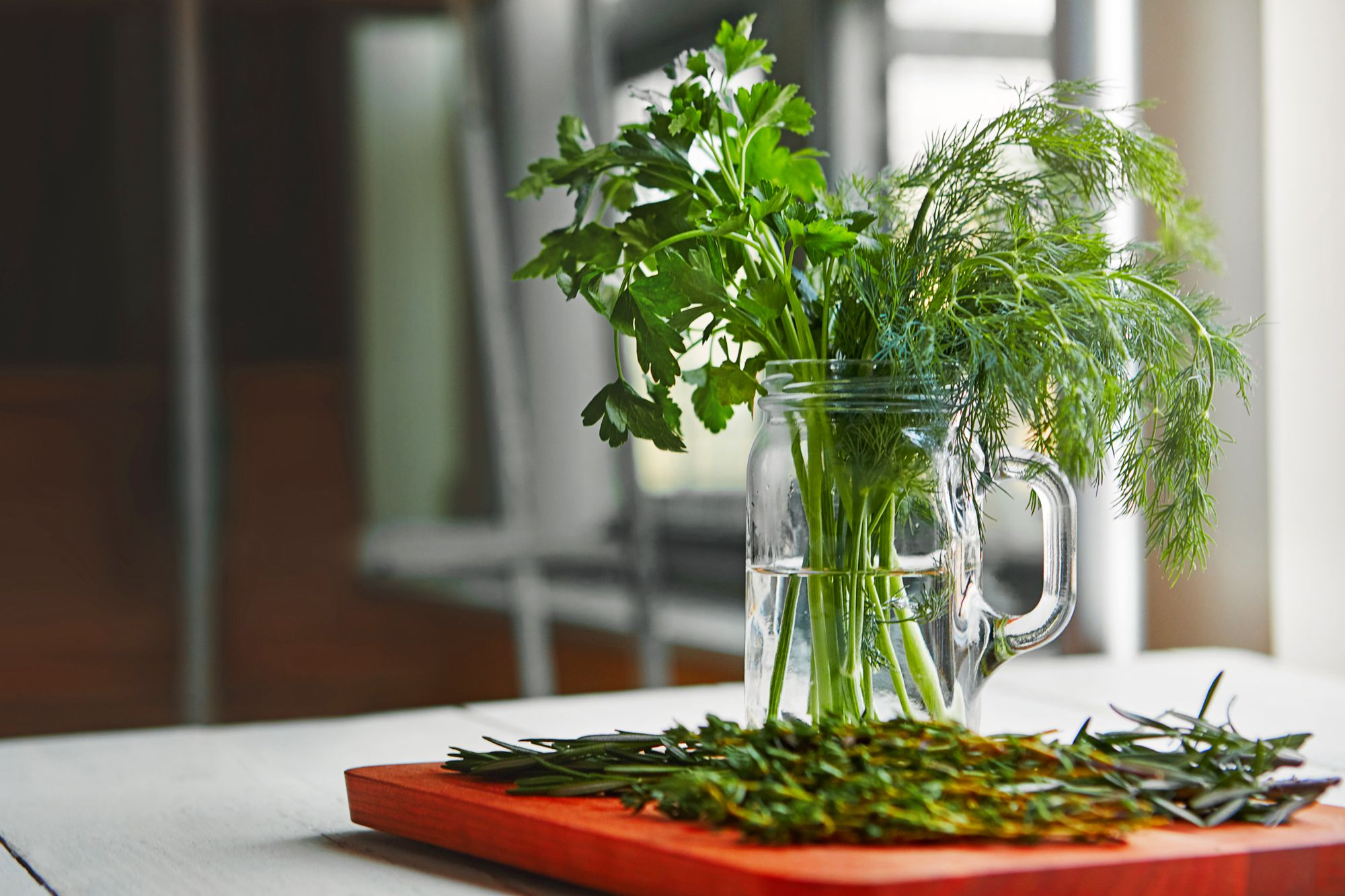
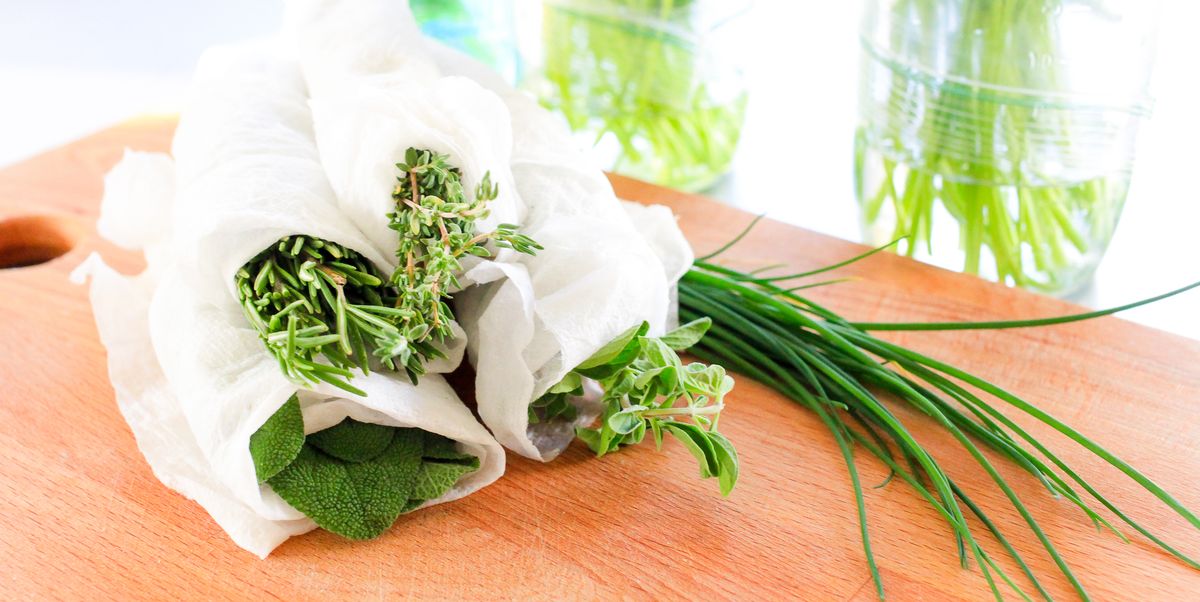
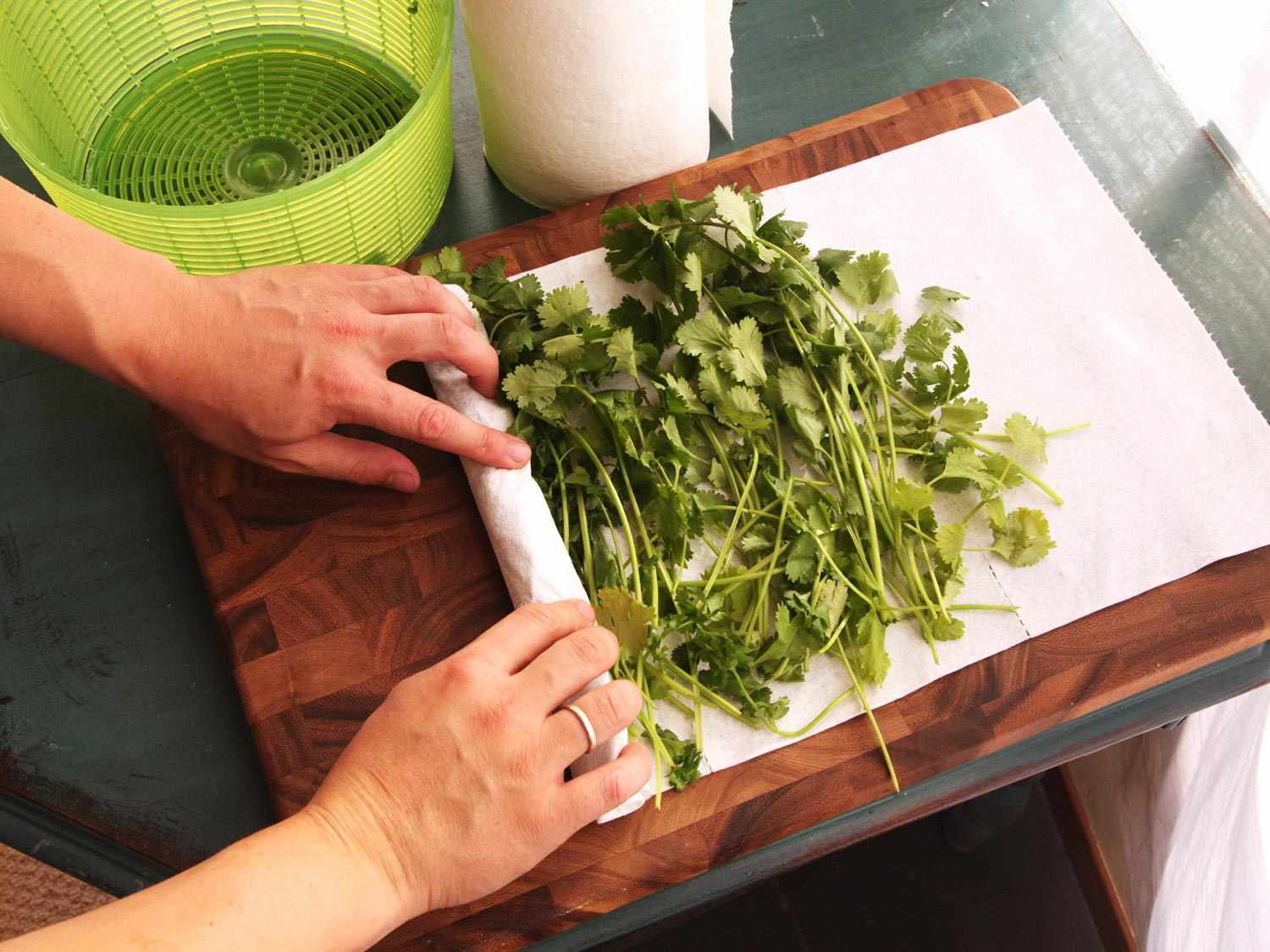
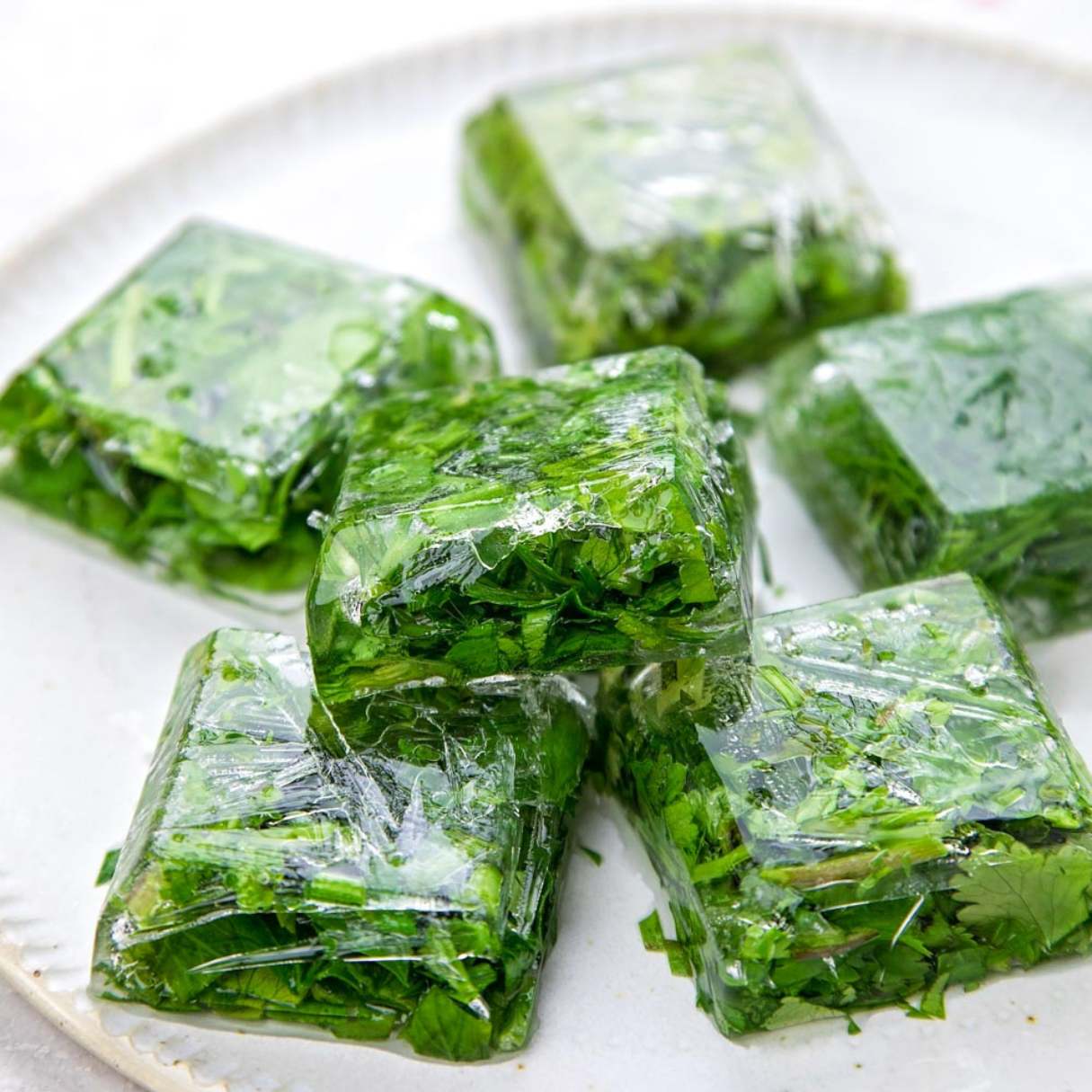

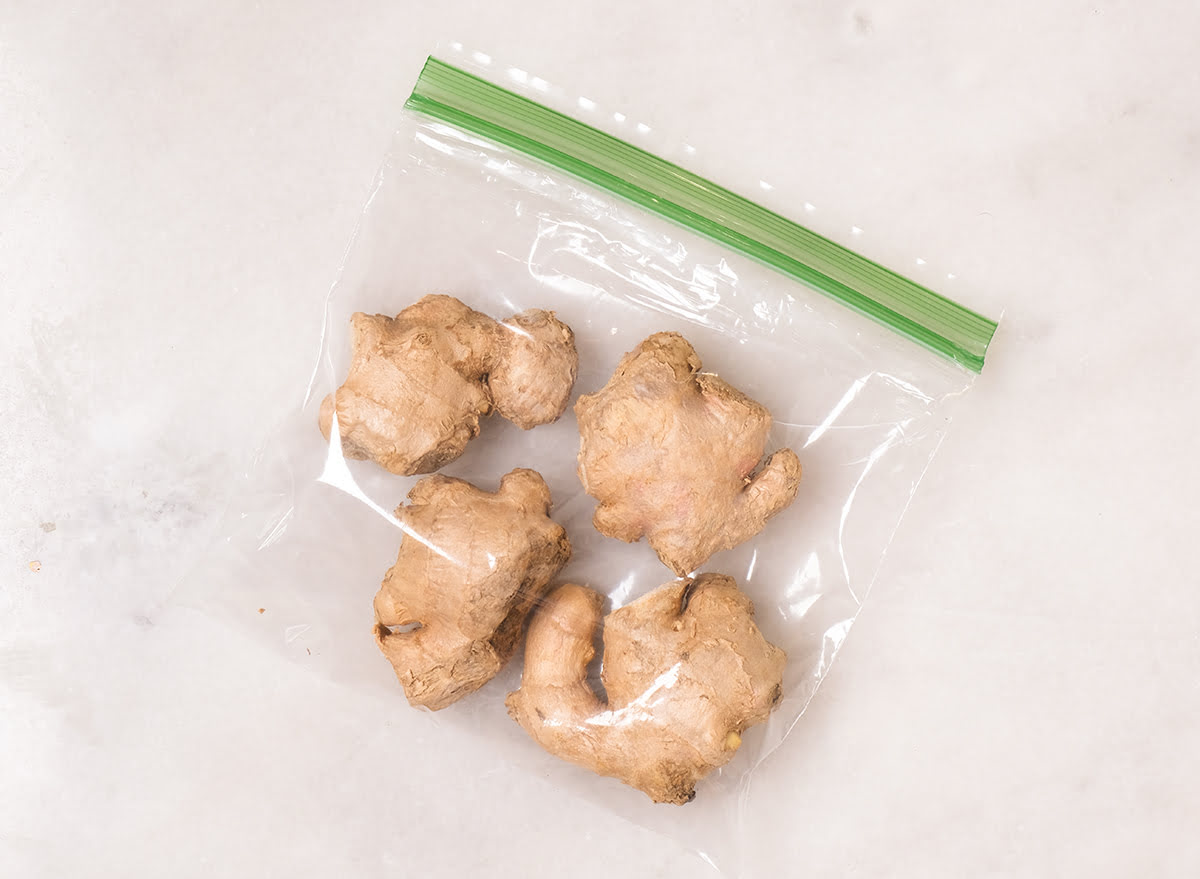
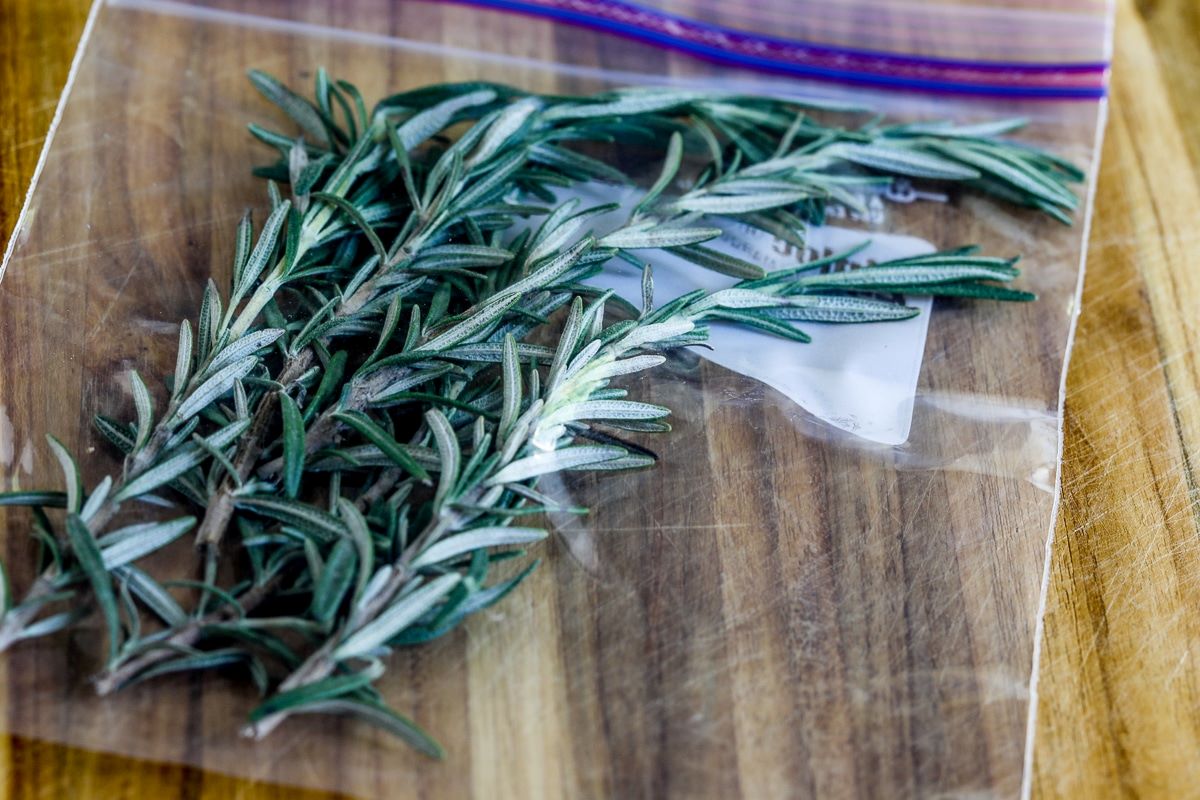
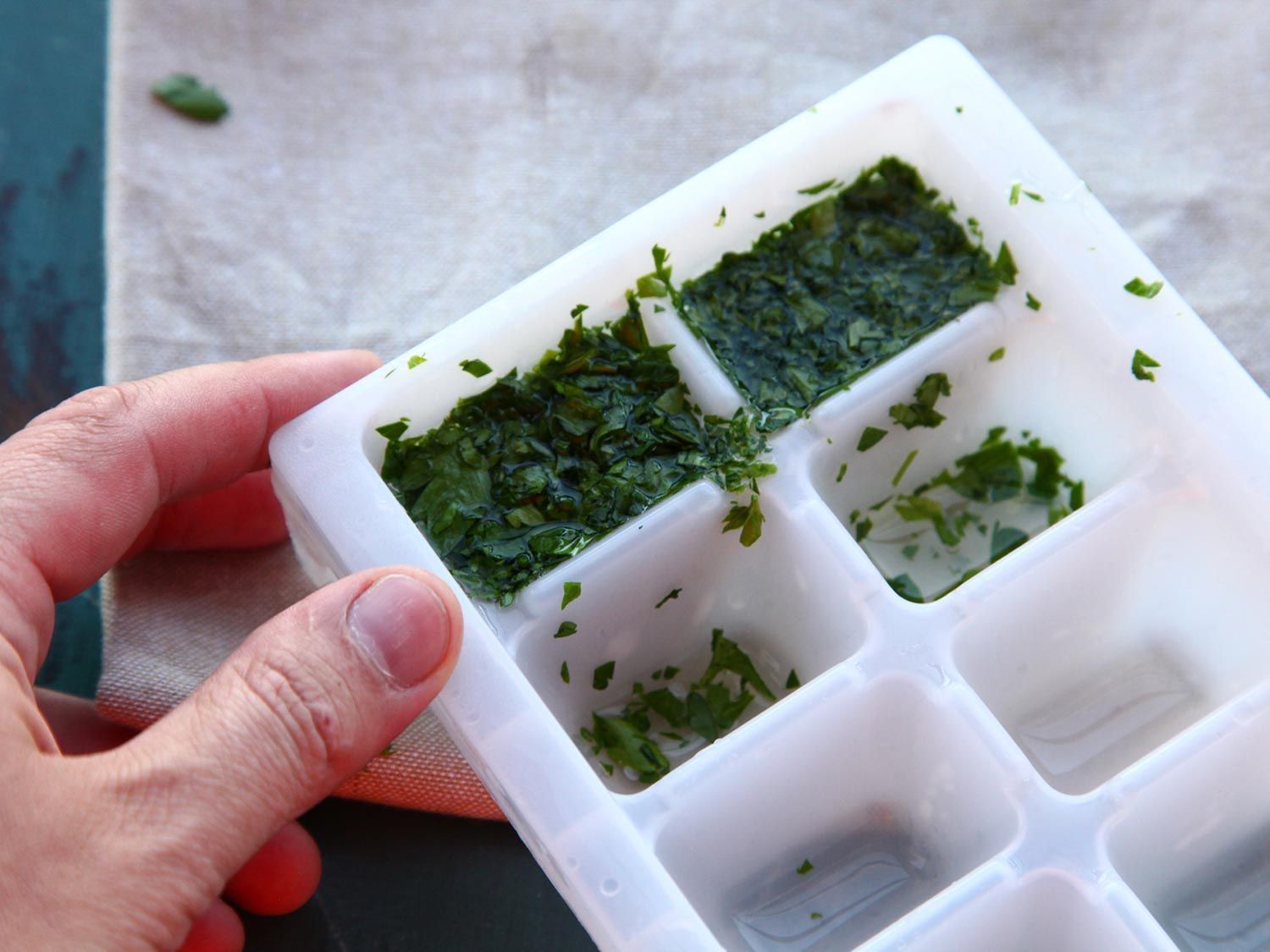
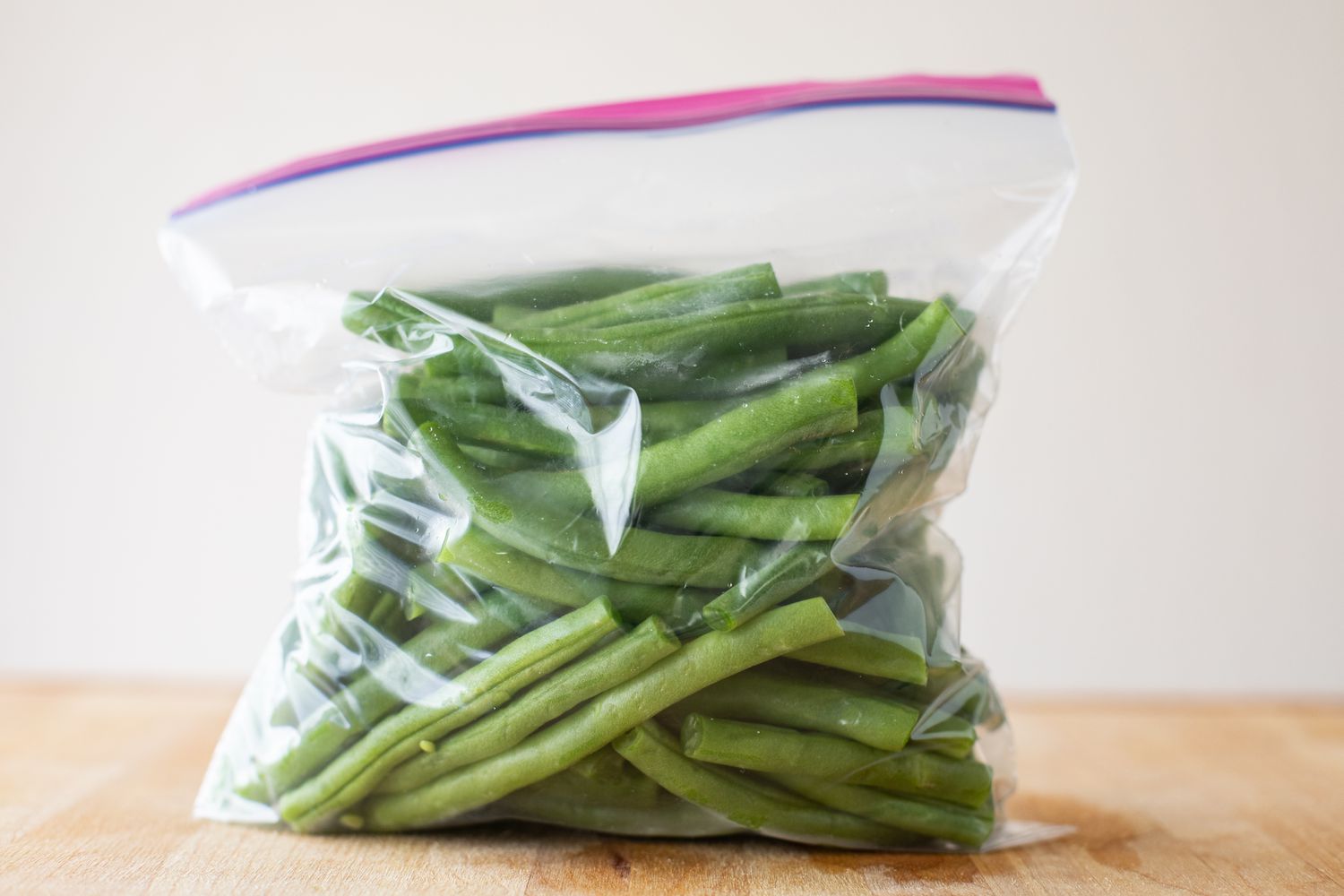
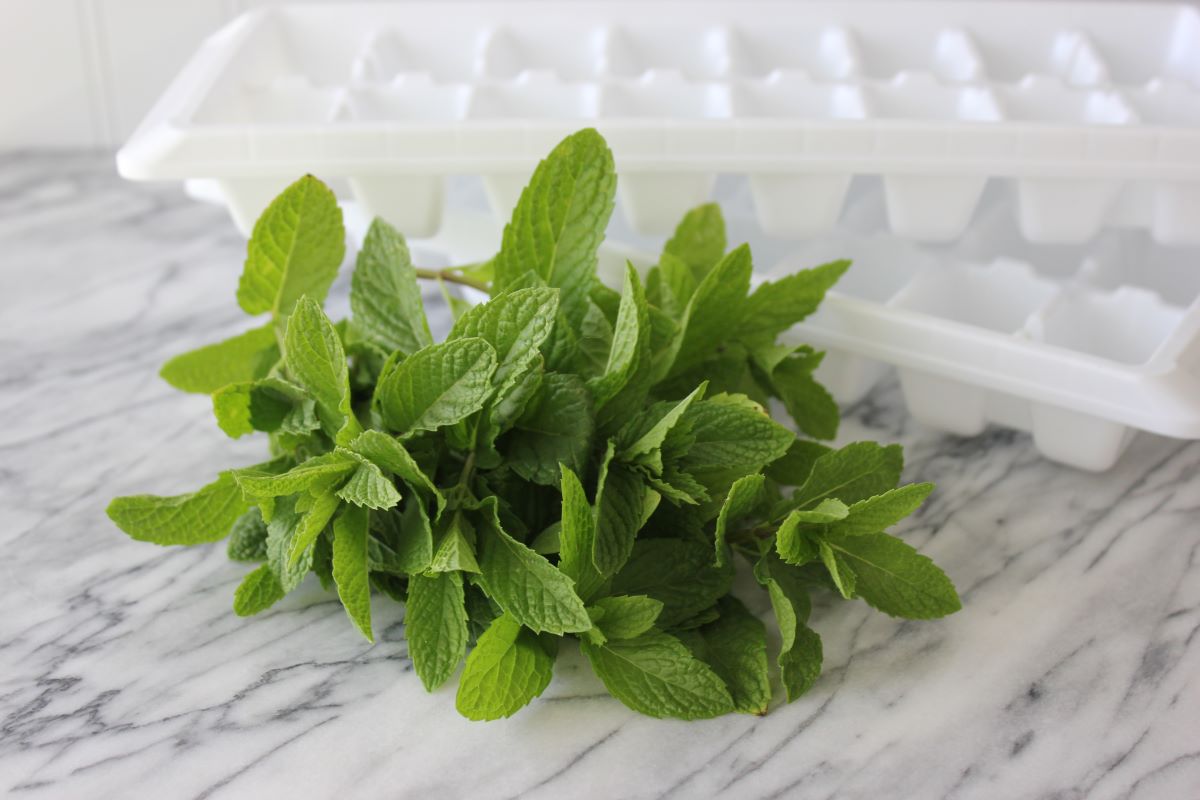
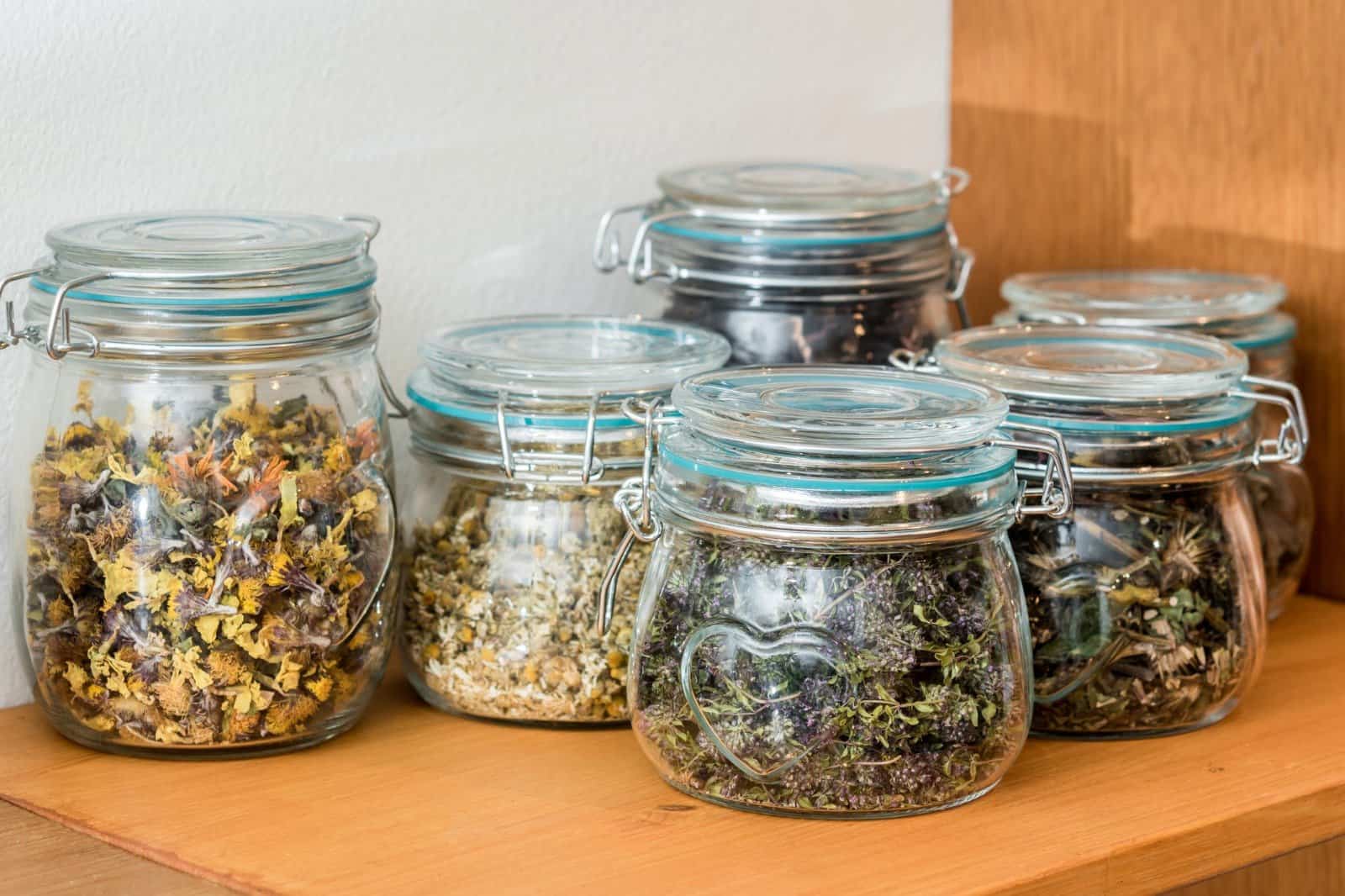
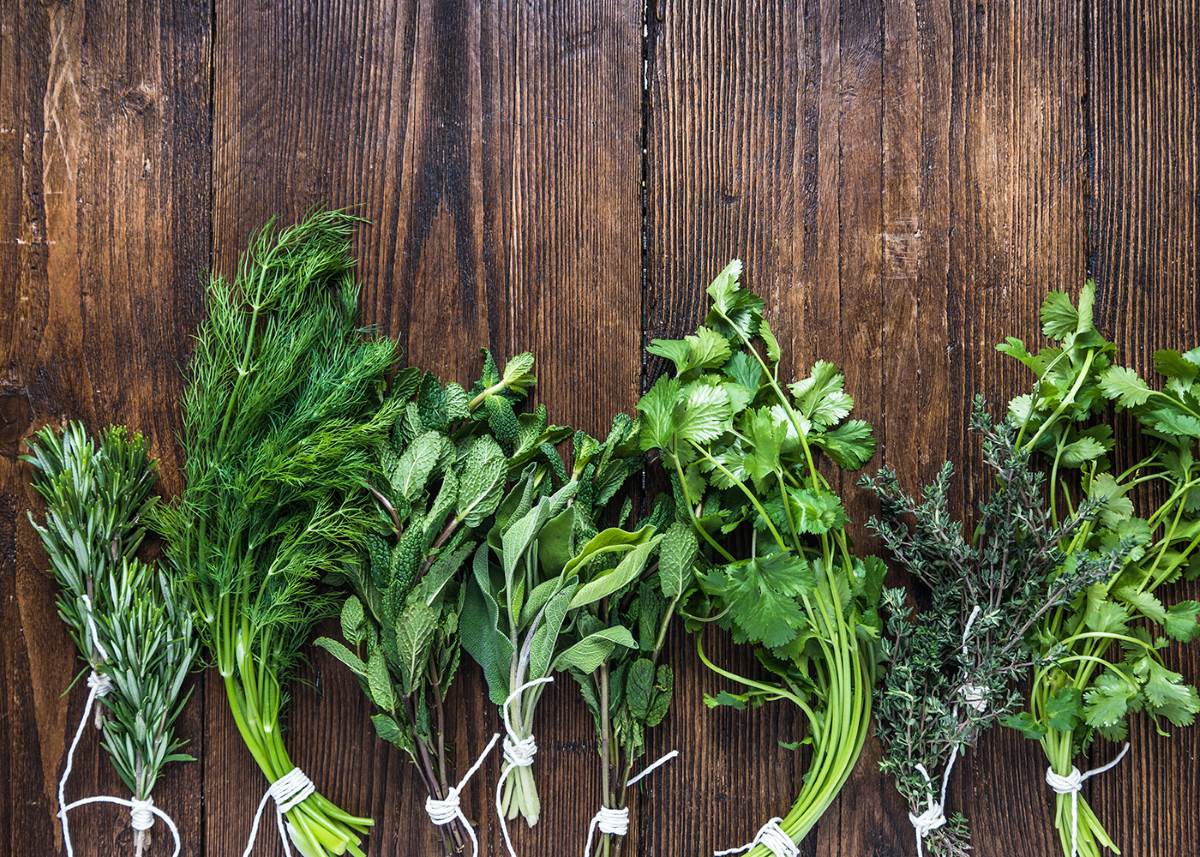
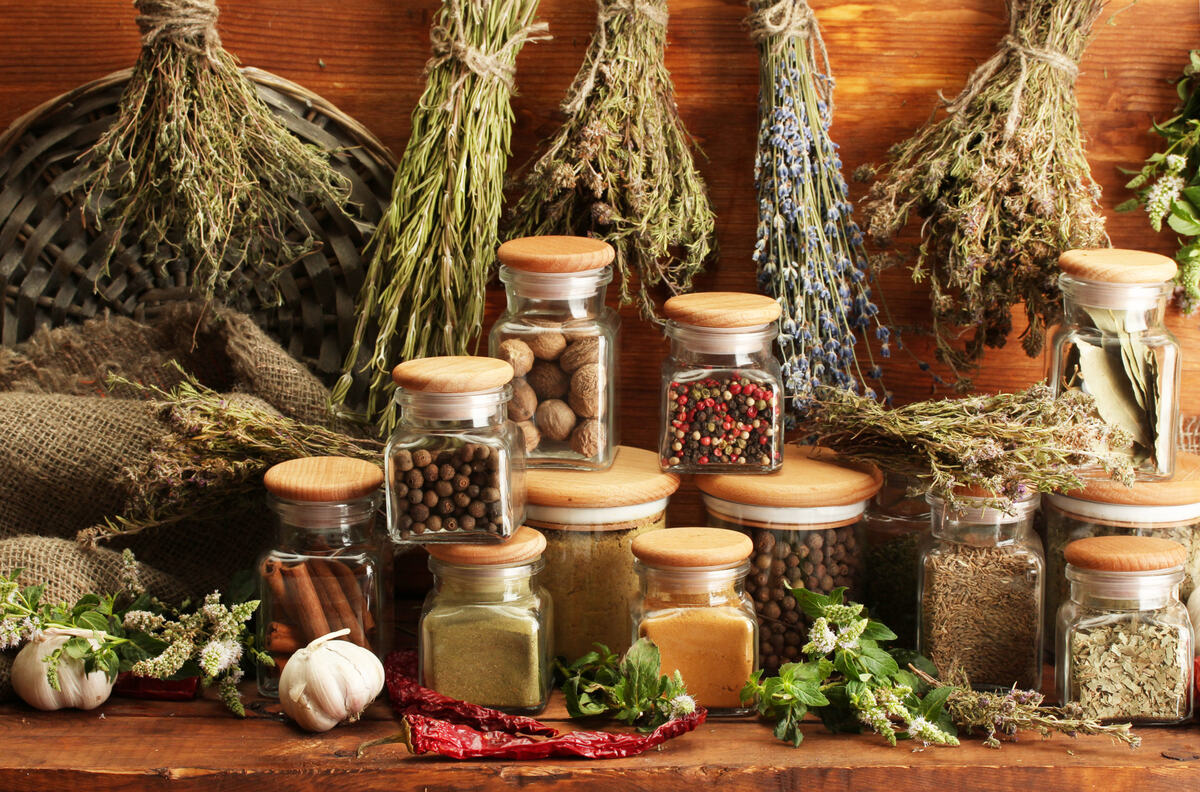

0 thoughts on “How To Store Fresh Herbs In Freezer”